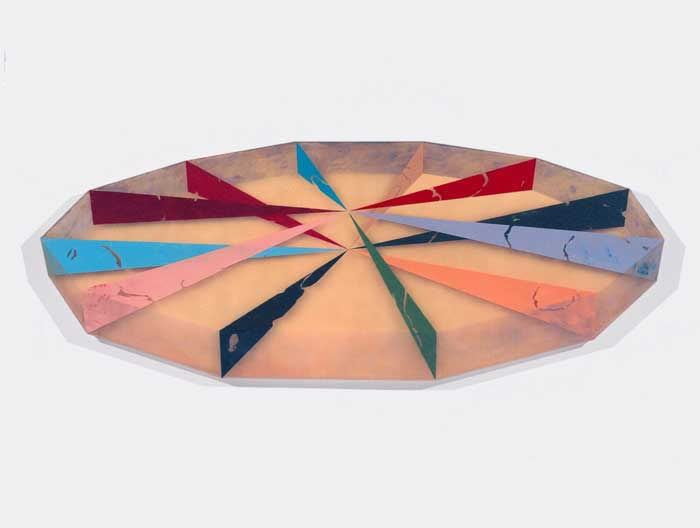| an illusion
Yeah - i could model it in wire and render it, but it would never
be anywhere near.
I'm not talking about the physical presence of the actual "Spindle"
object here - since we're in this mode of looking at it in pixelworld
(wherein all realities are inherently equal, some of them are just
better looking)
In wireframe, no matter the subtlety of the surface textures and
lighting - you don't get away from the fact that it's already an
object with all its sides - and that it exists in a volumetric
space that it carries with it in whatever electronic realm it lives
in as a model (until the technology its existence depends upons
dies...)
You can "pick up" a wireframe with your virtual fingers
and turn it around. The drag of not being able to do that in fully
rendered realtime is just that: a drag - it doesn't change the
immanence of the object. You can take those wireframe components
- which are already dimensioned in feet and inches and degrees
- and hand them to a craftsman and they can build that thng for
you. When you repurpose the wireframe - display it as a rendering
or projection on a screen, or rasterize it and print it on paper
(or whatever) - then it becomes something else, but it's _never_
what "Spindle" was.
"Spindle" above - existed _that way_ in your mind, and
then in resin. [still does, here in its crate in NM. . . /rd] It
never had any other sides than the one we're (by proxy here) looking
at. There is no backspace, there is no supporting technology other
than the consensual one we share by virtue of organic evolution
- this is cavepainting divorced from the hunt, from blood and bones
and hunger and the uncertainty of weather.
There was a good article in the LA SUNDAY TIMES about how "expensive"
raytracing of wireframed objects was, and how nearly impossible
it was to render light-scattering in a glass of milk. They're shining
lasers in it, they're working on faking the backlit glow of blood
in a cartoon character's ears because it takes too much computer
time to make it look right frame after frame in a video using physcial
radiosity.
Hell, Vermeer knew that. He'd starve as a cel artist penciling
away on a piecework rate like the production methods of 90% of
what you see on tv and in the movies...
One thing i'm doing with mesh and pixels is looking at the interface
between "you can grab it" and "you can look at it"
perception - except i'm fooling with subjects that don't mean anything
in terms of survival or nutrition or reproduction - it's just about
space and color. I'm just interested in how we interpret the lie
of dimensionality, how we'll sacrifice detail for intention, ascribe
emotional state to color content, reassess our physical size to
an implied perspective on a flat plane. I'm using high level radiosity
to give these meshed illusions - no matter how ridiculous - the
luminent versimiltude that cues our ability to distinguish between
the "real" and the "represented" - and using
it to tell spatial lies.
PS - who CARES if Mini Mouse's ears glow when backlit? This _is
not_ going to make her any more or less "believeable"
to me...
/mr
|



